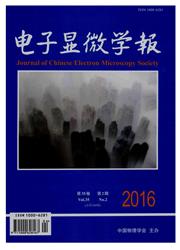

 中文摘要:
中文摘要:
本文深入研究了六方层状结构钴氧化物中的层间阳离子排列,电荷/轨道序和金属超导体NbB2中的电子能量损失谱,阐述了现代透射电子显微镜(TEM)技术和电子能量损失谱在功能化合物研究领域的应用。基于MxCoO2(M=Na,Sr或Ca)化合物的TEM结构分析,总结给出了反映这种层状结构化合物中阳离子含量和结构特性关联的相图。以Na0.5CoO2材料作为研究主体,系统分析了材料结构随温度的变化,并对Na离子有序和结构相变进行了深入探讨。在100K到20K温度区间观测到了两个超结构相,其基本特性可以用电荷/轨道有序模型很好地解释。NbB2是典型的层状超导体,电子能量损失谱表现出很强的各向异性。结合第一性原理计算对其电子结构和电子能量损失谱的特性进行了仔细分析,获得了费米能级附近B的2p轨道未占据态信息。在这些实验和理论结果的基础上,系统分析了六方层状钴氧化物中结构相变和物理性能的关联,并对NbB2和MgB2超导材料电子结构区别进行了讨论。
 英文摘要:
英文摘要:
Cation, charge/orbital ordering in layered hexagonal cobalt oxides and the electron energy-loss spectra (EELS) in NbB2 have been systematically investigated to demonstrate the application of advanced TEM on crystal and electronic structure of functional materials. A brief phase diagram was given which shows a rich variety of structural phenomena resulting from cation ordering, structural modulations and twinning domains in M, CoO2 (0.15 ≤ x ≤0.5, M = Na, Sr or Ca). Cation, charge/orbital ordering in Na0.5 CoO2 have been carefully examined between 1 000 K to 30 K by means of in-situ TEM observations. A superstructure with a wave vector of Q1 = a^*/2, becoming commonly visible below Tc1 = 88 K, which can be interpreted as the charge/orbital ordering on the Col and Co2 sites. Moreover, we have also observed another notable superstructure with Q2 = a^*/4 below the phase transition of Tc2= 53 K, which suggests a more complicated orbital ordered state existing at lower temperatures. A series of structural phase transitions in the temperature range from 100 to 1 000 K are directly identified, the observed superstructures and modulated phases can be interpreted by Na-ordering. The fine structures of the electron energy-loss spectra (EELS) for the B K-edge have been examined in Nb1.x Mg, B2 superconducting materials. Analysis of the electronic structure suggests that confinement of the intersheet covalent bonding is likely to be favorable for the improvement of superconductivity in this kind of materials.
 同期刊论文项目
同期刊论文项目
 同项目期刊论文
同项目期刊论文
 Observation of two O-H covalent bonds of water in the Na0.3CoO2 center dot 1.3H(2)O superconductor b
Observation of two O-H covalent bonds of water in the Na0.3CoO2 center dot 1.3H(2)O superconductor b 期刊信息
期刊信息
